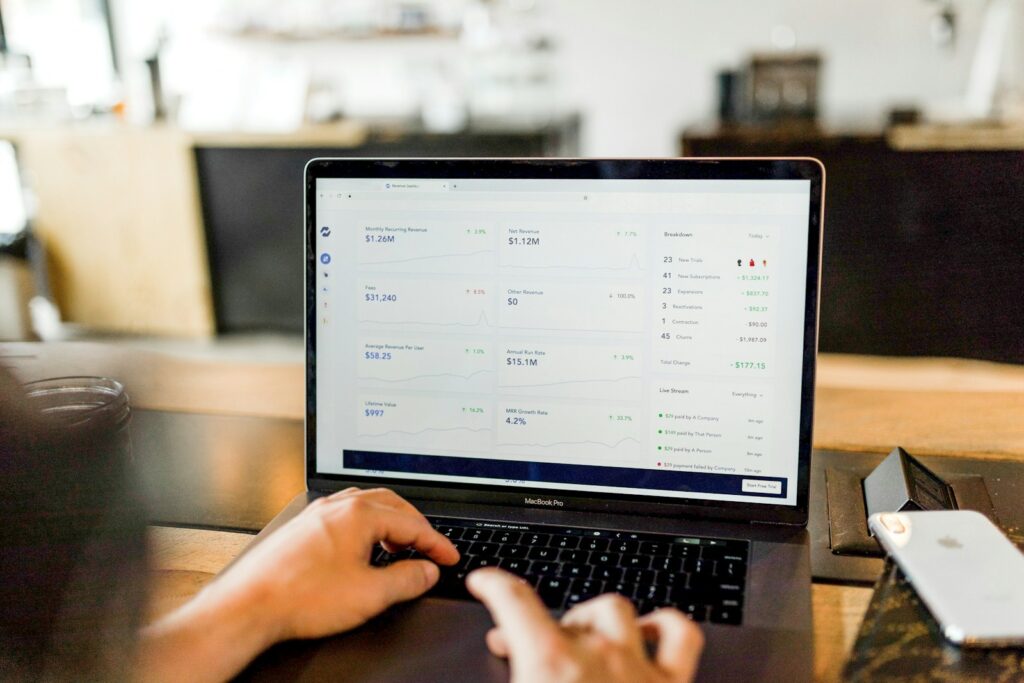
If you’re looking to build your fortune, investing can be one of the best places to do it. While starting with $1,000 may not sound like much in the grand scheme of things, it’s a powerful starting point. You can grow this money over time, transforming it into a substantial sum that creates a better financial future for yourself and your loved ones.
Indeed, it has never been cheaper or easier to be a new investor. The landscape of financial tools and accessible platforms has expanded dramatically, offering a plethora of great ways to start your investment journey today. Many of these strategies are designed not just for long-term growth, but also to help you quickly increase your bankroll, sometimes even offering nearly immediate returns through special incentives.
We’re here to demystify the process and provide you with actionable insights on how to make that initial $1,000 work tirelessly for you. This guide will walk you through 12 smart ways to invest $1,000, ensuring every dollar is strategically placed to maximize its potential and set you on a path toward significant financial growth.

1. **Buy an S&P 500 Index Fund**At the very top of our list for smart ways to invest $1,000 is buying an index fund based on the Standard & Poor’s 500 index. This isn’t just any fund; it’s a meticulously curated collection of around 500 of America’s most successful and influential companies, representing a broad cross-section of the U.S. economy. Investing in an S&P 500 index fund immediately grants you a stake in these corporate giants.
The historical performance of the S&P 500 index is compelling, boasting an average return of about 10 percent over time. This consistent growth means that, on average, you could see your initial $1,000 double in just over seven years. Such a return rate offers a robust foundation for long-term wealth accumulation, making it an attractive option for both seasoned and nascent investors.
For new investors, an S&P 500 index fund is an exceptional choice primarily due to its inherent diversification. This immediate spread across numerous companies significantly reduces the risk associated with investing in individual stocks. You’ll own a slice of some of the world’s best companies without needing to research and pick each one individually. In fact, legendary investor Warren Buffett himself has suggested that most investors would do best by simply buying and holding an S&P 500 fund and consistently adding to their position over time. It’s a testament to the simplicity and effectiveness of this investment vehicle.

2. **Buy Fractional Shares of Stocks**If you’re eager to infuse a bit more direct control and excitement into your portfolio, especially with a longer investment horizon, then buying a collection of individual stocks through fractional shares could be your ideal route. Traditionally, buying individual stocks required enough capital to purchase full shares, which could be prohibitive for high-priced equities. However, technology has democratized this access, allowing you to buy just a percentage of a stock or an Exchange-Traded Fund (ETF) rather than an entire share.
This innovative approach to investing, often referred to as micro-shares, means you don’t have to worry about having enough money to buy full shares. For instance, if a company like Tesla is trading at $701.24, you don’t need the full amount; you could purchase a tenth of that share for just $70.12. This makes it far more affordable to diversify your portfolio across several companies, even with a modest $1,000 investment.
This method empowers you to self-direct your investments, choosing companies you’ve researched and believe in. While individual equities can be more volatile than diversified index funds – a part of the price of investing directly – fractional shares make it feasible to build a truly diversified portfolio by spreading your $1,000 across multiple companies. A growing number of brokerages now offer fractional shares with $0 commissions, ensuring your entire $1,000 goes directly into your chosen investments without being eroded by fees. Platforms like M1 Finance allow you to buy down to 1/100,000th of a share, and Stash App even organizes thematic ETFs to help new investors align their investments with their interests.
Read more about: 14 Simple Steps to Start Investing with Just $100 and Build Long-Term Wealth

3. **Invest in an IRA (Traditional or Roth)**When considering how to invest $1,000 for your financial future, channeling your money into a retirement account like an Individual Retirement Account (IRA) offers some of the highest potential returns due to significant tax advantages. Whether you have access to a workplace retirement account or not, you can easily open an IRA on your own with an online broker, making it a highly accessible option for long-term wealth generation.
There are two primary types of IRAs, each offering distinct tax benefits tailored to different financial situations. A Traditional IRA allows you to deduct contributions from your taxable income if you meet certain income limits, and your earnings grow tax-deferred for decades, meaning you only pay taxes upon withdrawal in retirement. This is particularly appealing if you anticipate being in a lower tax bracket during retirement.
Conversely, a Roth IRA operates with after-tax contributions, so you won’t receive an upfront tax break. However, the immense benefit here is that your money grows completely tax-free, and critically, all qualified withdrawals in retirement are also tax-free. This makes the Roth IRA an excellent choice if you expect to be in a higher tax bracket later in life. Both types offer substantial contribution limits—for 2025, investors can contribute as much as $7,000, and an additional $1,000 if they are older than 50—providing ample room for your $1,000 and future contributions to flourish.
Furthermore, beyond the inherent tax advantages, there are often bonuses that can sweeten your IRA contributions. You can frequently combine opening an IRA with brokerages’ account-opening bonuses, which can give your initial $1,000 an immediate boost. Another powerful, yet often overlooked, incentive is the Saver’s Credit, a tax credit that can provide up to a 50 percent return on your contributions if your adjusted gross income falls within certain thresholds (e.g., less than $47,500 for married filing jointly in 2025). This is a substantial, risk-free return that effectively supercharges your $1,000 investment.

4. **Maximize Your 401(k) Match**For those who have an employer-sponsored retirement account, such as a 401(k) or 403(b), ensuring you maximize any employer matching contribution is arguably one of the smartest and easiest ways to get an immediate, guaranteed return on your money. This isn’t just a good deal; it’s literally “free money” that many employees overlook, effectively leaving a portion of their compensation on the table. If you’re not taking advantage of it, you may be overlooking an extra pay perk that your employer offers.
The mechanics of an employer match are straightforward: your company will contribute an amount to your retirement account, usually up to a certain percentage of your gross salary, matching a portion of your own contributions. For example, some companies will match 50 percent of your contributions up to 4 percent of your salary. This means if you put 8 percent of your paycheck into your 401(k), the company would provide an immediate 4 percent on top of that, effectively giving you a 50% return on your contribution (the company adds $1 for every $2 you contribute, up to the limit). Other common scenarios include a direct 3% match, where they contribute $3 for every $100 you save.
Unlike other investment strategies where you simply deposit money, utilizing a 401(k) match typically involves deferring money directly from your paycheck. This automated process makes consistent saving effortless and often unnoticed from a budgeting perspective. Beyond the direct match, contributing to a 401(k) can also lower your current income taxes since contributions are generally pre-tax. Furthermore, similar to IRAs, you can potentially take advantage of the Saver’s Credit, depending on your income, generating an additional tax credit that could push your effective return even higher, potentially reaching a 100 percent return with virtually no risk.
The annual contribution limits for 401(k)s are generous, allowing for $23,500 in total employee contributions for 2025, with an additional $7,500 catch-up contribution for those aged 50 and over. While most 401(k)s won’t allow a lump sum investment of $1,000 directly, you can easily set up your contributions to gradually incorporate this amount over time. If you have $1,000 ready to invest, check with your HR department or benefits specialist about how to set that money aside for retirement and ensure you’re getting every dollar of your employer’s match.
Read more about: Achieving Mortgage Freedom: A Definitive Guide to Paying Off Your Home 10 Years Early

5. **Leverage Robo-Advisors**For those who might feel overwhelmed or worried about managing their investments independently, robo-advisors offer an incredibly accessible and efficient solution. These digital platforms automate the entire investing process, effectively taking a lot of the guesswork out of building and maintaining a diversified portfolio. By using sophisticated algorithms, robo-advisors can select a portfolio that is perfectly aligned with your individual risk tolerance and financial goals, applying the same sound principles that a human financial advisor would use.
Getting started with a robo-advisor is remarkably simple and fast, often taking just a few minutes to open an account, with many allowing you to begin with no minimum deposit. Once set up, these platforms automatically invest your money, whether it’s your initial $1,000 or subsequent contributions, into a diverse collection of Exchange-Traded Funds (ETFs). This inherent diversification spreads your investment across various asset classes, helping to mitigate risk and optimize for growth according to your specified parameters.
One of the most attractive aspects of robo-advisors is their cost-effectiveness. They typically charge very low advisory fees, often in the range of 0.25% to 0.30% annually on your invested assets. For your $1,000, this translates to a mere $2.50 to $3 per year, a small price for professional-grade portfolio management. Beyond just investing, the best robo-advisors also provide valuable tools, such as calculators to project your money’s growth, and offer solid cash management accounts with a host of features.
Leading platforms like Betterment and Wealthfront exemplify the benefits of robo-advisors. Betterment, with its 0.25% fee and no account minimums, adopts a goal-based approach, helping you set and save for multiple financial objectives simultaneously. It also performs automatic rebalancing and tax-loss harvesting, which can significantly lower your tax bill. Wealthfront, another top-tier choice with the same low fee and a $500 minimum, offers not only IRAs and individual brokerage accounts but also 529 college savings plans, making comprehensive financial planning remarkably accessible.
Read more about: Your Quick Guide: Simple Secrets to Finding a Better Financial Advisor in Under 1 Month

6. **Pay Down High-Interest Debt**While not an investment in the traditional sense of buying assets, paying down high-interest debt stands out as one of the smartest and safest ways to effectively “invest” your $1,000. Of all the financial strategies discussed, this one offers an absolute guaranteed return, often exceeding what most investments can promise. If you are carrying balances on credit cards or other loans with interest rates of 25% or even 30% APR, that exorbitant interest is money that is actively leaving your pocket, rather than accumulating for your benefit.
Think of high-interest debt as the inverse of a high-return investment. Instead of earning interest, dividends, or seeing your asset values increase, you are paying out significant sums just to maintain your debt. This makes it incredibly difficult to build wealth or even begin investing in other avenues when a substantial portion of your income is siphoned off by interest payments. It is why financial experts universally recommend prioritizing the elimination of high-interest debt as much as you possibly can before seriously delving into other investment opportunities.
To illustrate the power of this strategy, consider a $1,000 balance on a credit card with a 20% APR. If you were only to make the minimum payment of $25 each month, it would take you an astonishing 67 months – nearly six years – to pay off the balance, costing you an additional $661 in interest charges alone. By dedicating your $1,000 to pay off this balance, you immediately save that $661 in interest, providing you with a guaranteed, risk-free return equivalent to a 66.1% yield over that period. This immediate savings instantly frees up cash flow for future investments or other financial goals.
Even if your debt balance is considerably more than $1,000, making a significant dent in it can still have a profound impact. While $1,000 might not eradicate all your obligations, it can accelerate your journey to becoming debt-free. For those with much larger high-interest debts, consider strategies like a 0% introductory APR credit card or a debt consolidation loan. Products like the Wells Fargo Reflect® Card, for instance, offer an extended 0% intro APR period on purchases and balance transfers, allowing you to pay down principal without accumulating additional interest, transforming that saved interest directly into your financial gain.
Navigating your financial journey means exploring a variety of strategies beyond the initial, foundational steps. With your first $1,000 strategically placed, the next phase involves diversifying your portfolio further, securing your short-term needs, planning for significant future expenses, and even venturing into entrepreneurial pursuits. These additional avenues are designed to build resilience, capture growth in different markets, and ensure your money is working for you in every conceivable way, always with an eye on both opportunity and practical utility.
Read more about: Unlock Your Potential: 12 Actionable Strategies to Boost Your Credit Score by 100 Points in 90 Days

7. **Go Super Safe with a High-Yield Savings Account**When your primary concern is the liquidity and safety of your funds, especially for short-term needs or emergencies, a high-yield savings account stands out as an exceptionally smart move. While traditional investing often focuses on growth, this strategy is about capital preservation and accessibility. It’s about building a financial cushion to navigate life’s inevitable twists and turns without resorting to high-interest debt.
These accounts are currently offering some of the highest returns seen in years, making them more attractive than ever for parking cash. Unlike major investments susceptible to market fluctuations, a high-yield savings account ensures your money is readily available when you need it most. Many online banks offer competitive APYs, often around 0.50% to 0.60% or even higher, providing guaranteed returns in the form of compound interest.
For instance, Ally Bank, Live Oak Bank, and Marcus by Goldman Sachs are frequently cited for their competitive rates and favorable terms. They typically feature $0 minimum starting deposits, no monthly maintenance fees, and immediate access to your cash. This makes them ideal for building an emergency fund, aiming for three to six months’ worth of living expenses, or saving for any short-term goals you might have.
Experts stress the importance of an emergency fund as crucial to your financial health. It prevents straining your budget or incurring debt when faced with unexpected expenses like job loss, medical bills, or surprise home repairs. Prioritizing this safety net ensures you’re prepared for whatever comes your way, with your funds secured and earning interest.
Read more about: Navigating the Sale: The 14 Worst Financial Mistakes First-Time Home Sellers Must Avoid for Optimal Returns

8. **Invest in ETFs**Exchange-Traded Funds (ETFs) offer an incredibly efficient and accessible way to achieve broad diversification in your portfolio, often even more so than investing in fractional shares of individual stocks. ETFs are essentially a basket of securities that trade just like individual stocks on an exchange, providing exposure to numerous companies or assets within a single purchase.
This investment vehicle simplifies diversification by allowing you to invest in a wide range of assets without having to research and select each one individually. For example, the Vanguard Total Stock Market ETF (VTI) is designed to track the performance of the entire U.S. equity market, granting you exposure to over 3,500 stocks in a single fund. This broad exposure significantly mitigates the risk associated with investing in single companies.
Another significant benefit of ETFs is their cost-effectiveness. They are typically passively managed funds, meaning they aim to track a specific index rather than actively trying to beat the market. This operational efficiency translates into lower expense ratios compared to actively managed mutual funds. While mutual funds might have average expense ratios between 0.5% and 1%, ETFs often boast ratios closer to 0.2%, allowing more of your $1,000 to remain invested and grow over time.
Accessibility has also been a game-changer for ETFs. It’s now easy to find commission-free ETFs at most brokerages, which means your entire $1,000 investment goes directly into the fund without being eroded by trading fees. Moreover, the option to invest in fractional shares of ETFs is also available at many platforms, such as M1 Finance and Stash, allowing you to spread your investment across even more funds and themes that align with your interests.
Read more about: Retirement Planning Perils: 14 Common (and Costly) Mistakes Every Pre-Retiree Needs to Avoid

9. **Invest in Real Estate**Investing in real estate might sound like an endeavor requiring substantial capital, but the landscape has evolved dramatically, making it more affordable and accessible than ever before. You can genuinely start building a real estate portfolio with an investment as modest as $1,000, without needing to buy rental properties or flip houses.
One of the most effective and popular avenues for this is through Real Estate Investment Trusts (REITs), especially those offered by platforms like Fundrise. REITs allow you to invest in private market real estate projects such as new apartment complexes, commercial developments, and single-family homes, effectively pooling your money with other investors to collectively own income-generating properties.
While real estate investing often requires a long-term commitment – Fundrise, for example, recommends leaving your money invested for at least five years to maximize returns – the potential for growth can be compelling. Although real estate is generally riskier than some other investment types, platforms like Fundrise have reported significant returns, with 7.42% in 2020 and even higher ranges of 9% to 12% in previous years.
This approach democratizes access to a historically exclusive asset class, enabling you to participate in large-scale real estate ventures. It’s a powerful way to diversify your investment portfolio and tap into a different market, offering an alternative to traditional stock market investments and potentially robust returns over the long haul.
Read more about: 12 Common Mistakes First-Time Homebuyers Make (And How to Master Your Homeownership Journey)

10. **Open a 529 Account**For those planning for future educational expenses, whether for themselves or a loved one, opening a 529 account presents a highly advantageous strategy for investing $1,000. These specialized savings plans are designed to help your money grow specifically for college costs, while also providing significant tax benefits that make future education more affordable.
The primary draw of a 529 account is that any money withdrawn from it and used for qualified educational expenses is completely tax-free. This offers an attractive prospect for parents or individuals saving for higher education, as it allows your investment gains to compound without being diminished by taxes, ultimately reducing the overall financial burden of college tuition, room and board, and other related costs.
Furthermore, recent legislative changes have made contributing to a 529 account even more flexible and appealing. The 2022 SECURE Act 2.0 now allows beneficiaries of a 529 plan to convert a lifetime total of up to $35,000 from their 529 plan into a Roth IRA. This conversion can be done without incurring taxes or penalties, provided the account has been open for at least 15 years before the transfer, adding another layer of versatility to this education savings vehicle.
This flexibility means that if your child chooses not to pursue higher education, or if there are leftover funds, that money isn’t necessarily locked away. The option to transfer a significant portion into a Roth IRA for their own retirement further enhances the appeal of a 529 account as a smart, multi-purpose financial planning tool, effectively addressing both educational and long-term savings needs.
Read more about: 11 Budget-Friendly Meals That Feed a Family of Four for Under $10: Your Ultimate Guide to Delicious Savings

11. **Open a Certificate of Deposit (CD)**If your financial house is in order—meaning you have a solid emergency fund, are on track with retirement contributions, and are free of high-interest debt—but you prefer not to take on investment risk, then Certificates of Deposit (CDs) offer a secure and reliable option for your $1,000. CDs are a type of deposit account where you earn a fixed interest rate for a specific amount of time on the funds you deposit.
The appeal of CDs lies in their predictability and safety. You commit your money for a set term, which can range from as short as three months to as long as five years, and in return, you receive a guaranteed interest rate. Longer terms typically come with higher Annual Percentage Yields (APYs), rewarding you for locking up your funds for a greater duration. This makes them a strong choice for money you don’t need immediate access to.
While CDs don’t offer the same liquidity as a high-yield savings account – early withdrawals usually incur a penalty – their interest rates are often higher than those on regular savings accounts. This trade-off provides better returns for capital preservation, especially in a rising interest rate environment. They are an excellent way to earn more on cash that you know you won’t need for a specific period, perhaps for a down payment on a future purchase or a planned large expense.
Several institutions offer competitive CD rates. For instance, Synchrony Bank, CFG Community Bank, and Ally Bank provide various CD terms with attractive APYs. While penalties for early withdrawal exist, some options like Ally’s No Penalty CD offer more flexibility, allowing withdrawal of the entire balance after an initial six-day period without penalty, blending security with a touch more accessibility.
Read more about: Debunking 12 Persistent Investment Myths: What Financial Advisors Want You to Know for Your Retirement Journey

12. **Build Up a Passive Business**For those with an entrepreneurial spirit and a willingness to invest “sweat equity” alongside their $1,000, building a passive business can be a highly rewarding and innovative way to grow your money. It challenges the traditional definition of investing by channeling your capital and labor into creating an income-generating asset that requires less active management over time.
Indeed, even with a modest $1,000, you can initiate a passive business, particularly if you’re prepared to put in significant upfront work. The key is to identify a niche you are passionate about and possess expertise in. From there, you could set up a website to generate advertising or affiliate revenue, or develop and launch an online course on a topic where you are a subject matter expert. The initial capital demands for many digital passive businesses can be surprisingly low.
The concept extends beyond purely digital ventures. While earlier sections touched upon real estate, the broader umbrella of passive businesses can also include innovative approaches like making micro-loans through a crowdfunding platform. This allows you to support small businesses or individuals, earning interest on your capital without direct operational involvement, provided you understand the associated risks.
This strategy is about leveraging your knowledge and initial capital to create a system that can generate income while you focus on other pursuits. It demands diligence and creative problem-solving at the outset, but the long-term benefit of a revenue stream that requires minimal ongoing effort makes it an exciting and potentially high-return “investment” for your $1,000, truly maximizing its potential for wealth creation.
**The Final Word: Charting Your Course to Financial Growth**
As we’ve explored these 12 smart ways to invest $1,000, it becomes clear that starting your investment journey is more accessible and versatile than ever before. From diversified market exposure and tax-advantaged retirement accounts to securing your present and building future income streams, your initial $1,000 is not just a sum of money; it’s a powerful seed for significant financial growth. The barriers that once deterred new investors—high costs, limited options, and complex processes—have largely crumbled, replaced by low-cost ETFs, intuitive robo-advisors, and fractional share opportunities. Brokerages have stepped up, eliminating commissions and lowering fees, all to ensure your hard-earned dollars work harder for you.
Read more about: Beyond the Fine Print: 14 Hidden Bank Fees Draining Your Wallet – A Consumer Reports Deep Dive for 2025
Remember, investing is a marathon, not a sprint. It’s about building a robust foundation, making informed choices, and consistently nurturing your financial garden. Each $1,000 invested strategically is a step toward greater financial independence and security for you and your loved ones. Take the time to understand these options, align them with your personal goals and risk tolerance, and then, with confidence, make that money work tirelessly for your future. Your future self will undoubtedly thank you for starting today.



